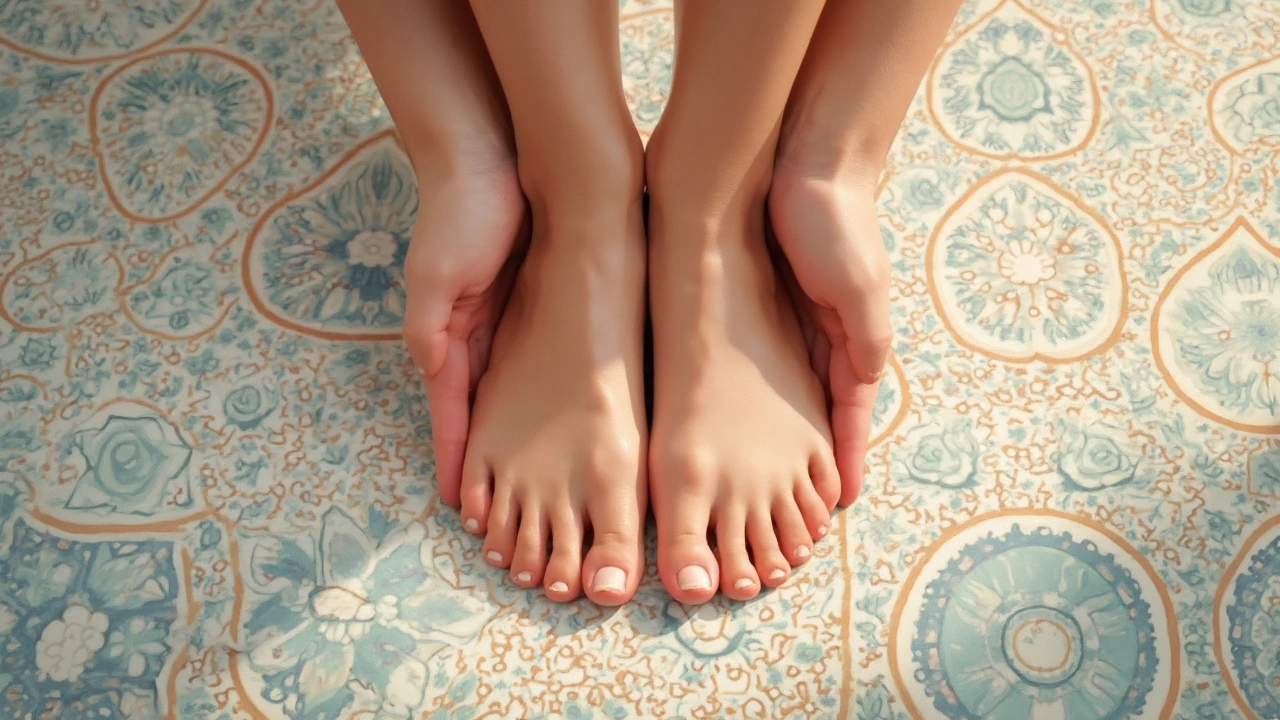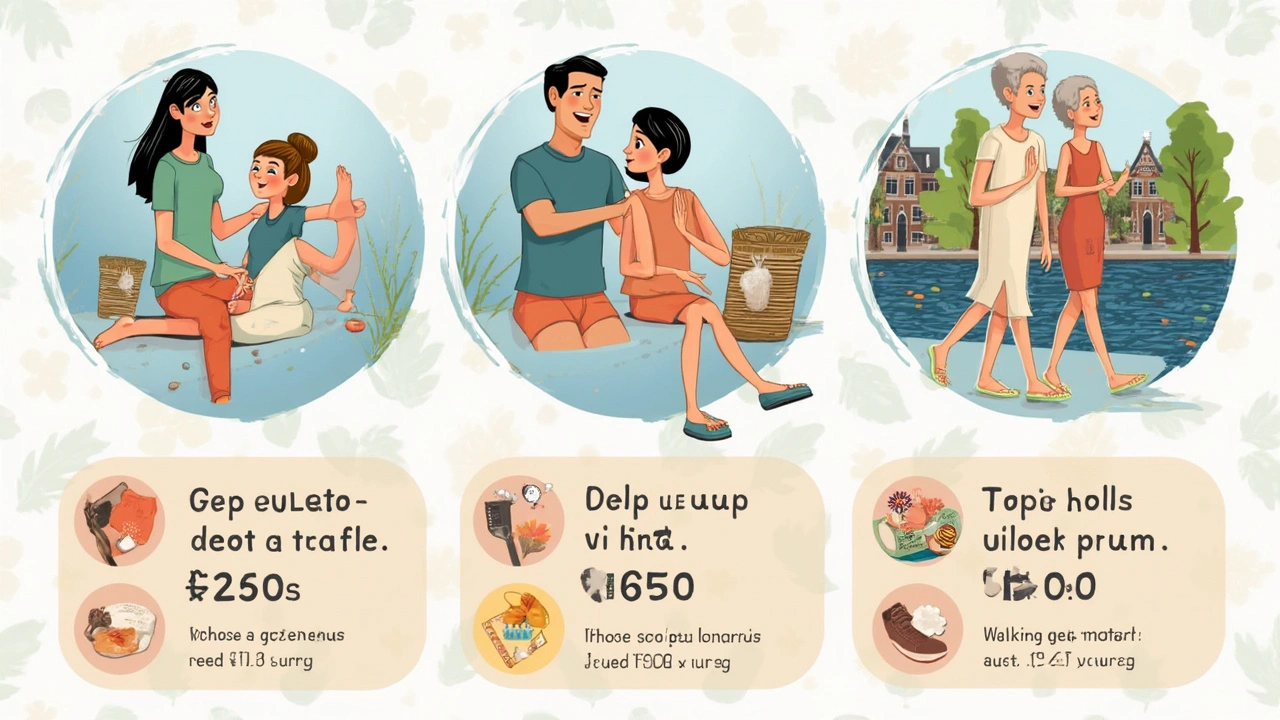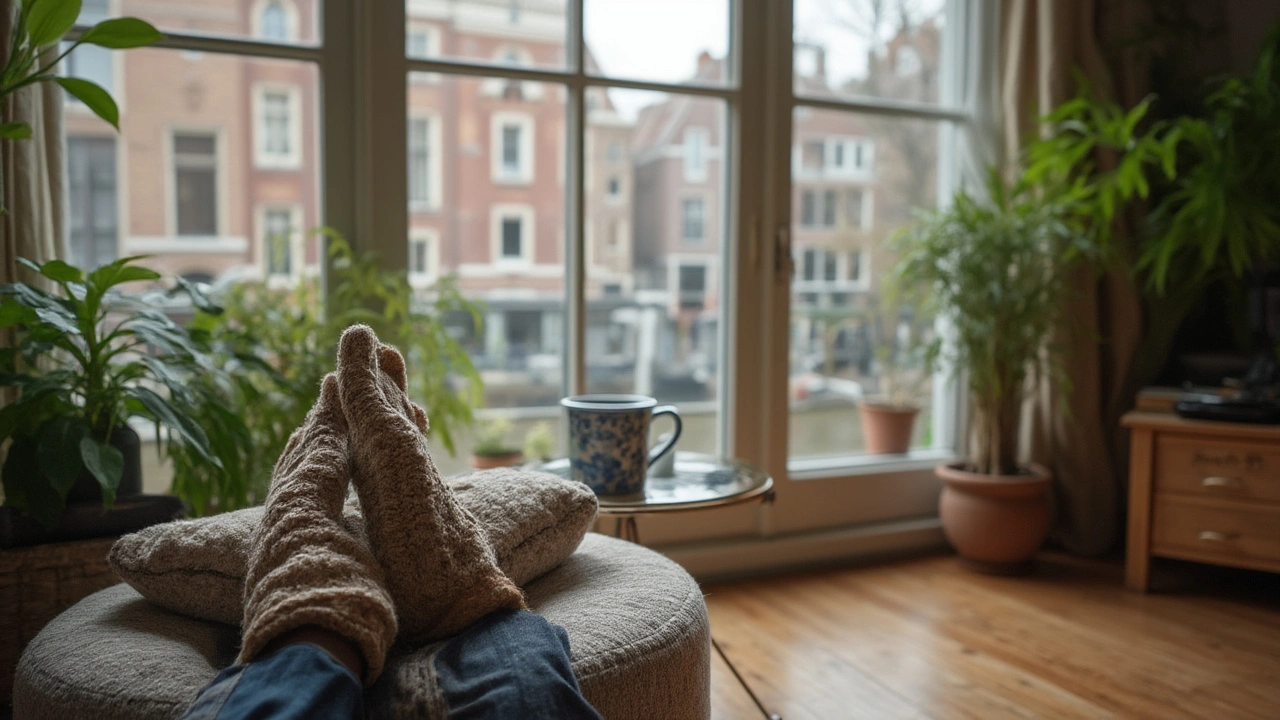Foot Massage 101: Everything You Need to Know

Stiff feet after a long day? You’re not alone. There’s a reason foot massages keep popping up everywhere—it’s not just about ticking off a self-care box, but about real relief and better wellbeing.
Think of a foot massage like rebooting your mood and body at the same time. Ever get that wave of ‘Ahh, finally!’ as someone presses all the right pressure points? It’s not magic—it’s simple science and a bit of skill. The nerves in your feet link up to the rest of your body, so when you unwind those, the good feelings travel everywhere.
But not every massage is the same. There are quicker options for people in a rush and full spa experiences for when you really want to go all in. And yes, you can get a fantastic experience without breaking the bank or feeling out of your comfort zone. It’s about knowing what you want and asking the right questions.
If you’re wondering about the benefits, the different massage types, how to book safely, or even how much you should be paying—it’s all down below. Let’s get into what actually matters, so your feet (and wallet) can breathe easy.
- Key Takeaways
- Benefits of Foot Massage
- Popular Types of Foot Massage
- What Happens During a Session
- How to Choose the Right Service
Key Takeaways
Foot massage isn’t just about making your feet feel good—there’s solid proof that it can make a difference for your whole body. People often notice lower stress, better mood, and even less pain after a good session. Here’s what really stands out when it comes to foot massage:
- It helps improve blood flow, which is great if you’re on your feet all day or stuck at a desk for hours.
- A quick 10-15 minute rub can cut down on anxiety and boost your energy. Several clinics even use it for people recovering from surgery or serious illness to help with faster healing.
- You can choose from general relaxation, targeted pressure points, or medical-style therapies—so it fits your needs, not just a spa trend.
- Sessions are usually affordable. You can find options for under $30, especially if you go for a basic massage or community clinics.
- Most therapists work in clean, safe environments, but it’s smart to check reviews, licenses, and qualifications before you book.
Need a quick look at how foot massage compares to other common options? Here’s a handy table:
| Type | Average Cost | Main Benefit | Time Needed |
|---|---|---|---|
| Foot Massage | $25 - $60 | Reduces pain, boosts mood | 15-30 min |
| Full Body Massage | $60 - $150 | Whole-body relaxation | 60-90 min |
| Reflexology | $40 - $80 | Targets health through feet | 30-60 min |
If you want to boost recovery, relax, or just treat yourself after a long day, this is a fast, proven way to do it. There’s an option out there for every budget and lifestyle.
Benefits of Foot Massage
If you always thought a foot massage was just a nice treat, you’re in for more than a surprise. This isn’t just about pampering. There’s a real reason so many people swear by it—it actually does good things for your body and mind.
First, let’s talk stress. A good foot massage can lower your cortisol levels—yep, that’s the hormone that messes with your mood and sleep when you’re tense. According to a study published in 2021, participants who got a 15-minute foot massage after work saw their stress drop by over 30%. So it’s not just in your head—your body really chills out.
Pain relief comes next. Ever noticed how your feet throb after standing or walking all day? Regular foot massages help reduce pain, especially if you have conditions like plantar fasciitis or arthritis. People with chronic pain reported about 25% less foot pain after weekly foot massages for a month, based on a small clinical trial from Texas in 2022.
That’s not all. Check out some other concrete perks:
- Better sleep—massaging your feet before bed helps you fall asleep faster and sleep deeper.
- Less swelling—foot massage helps move fluid out of your feet and ankles, great if you sit or stand a lot.
- Boosted blood flow—getting those tiny vessels in your feet working means warmer feet and can even help with healing.
- Mood lift—it’s hard to feel cranky when every nerve ending is singing.
Quick look at the numbers? Here’s a handy table of real benefits from clinical research and surveys:
| Benefit | Reported Improvement (%) | Source |
|---|---|---|
| Lower Stress | 31% | Workplace Wellness Study, 2021 |
| Reduced Foot Pain | 25% | Texas Pain Research, 2022 |
| Improved Sleep | 22% | Insomnia Clinic Survey, 2020 |
| Decreased Swelling | 18% | Mobility Clinic, 2021 |
So, when you think about treating your feet, remember—it’s not just about feeling nice for five minutes. You’re actually helping your whole body, from lowering stress to supporting recovery, one good rub at a time.

Popular Types of Foot Massage
Not all foot massages are created equal. Depending on where you go and what you need, you’ll find a handful of main styles. Knowing what’s on offer helps you pick what suits your mood, schedule, or health goals best.
- Swedish Foot Massage: This is the classic you probably picture—think gentle kneading, rubbing, and tapping. It’s geared towards pure relaxation and shaking off everyday tension. Perfect if your feet just need a break.
- Reflexology: Here’s where things get more interesting. Reflexology is big on the idea that certain spots on your feet connect to other parts of your body, like your organs and nerves. A reflexologist uses firm pressure on these points, aiming to balance your whole system. Some folks swear by it for headaches or stress.
- Thai Foot Massage: This style brings a mix of pressing, stretching, and sometimes even a wooden stick for extra targeted pressure. Expect more movement than the usual massage. It can get intense, but lots of people find it leaves their feet extra peppy.
- Deep Tissue Foot Massage: Got stubborn knots? Deep tissue gets in there with slow, strong strokes to work out those really tight spots. Not everyone loves the extra pressure, so if you’re new, maybe build up to it.
- Aromatherapy Foot Massage: Pair a basic foot massage with scented oils—think lavender, peppermint, or eucalyptus. The combo of touch and scent can be super calming or even energizing, depending on your pick.
Each type works a little differently on your mind and body. A 2022 survey by the American Massage Therapy Association found that foot massage was the second-most requested treatment in spas, right after back massage. It’s not just about comfort—many people use it for better sleep and stress relief.
| Type | Main Benefit | Typical Session Length |
|---|---|---|
| Swedish | Relaxation, light soreness | 30-45 min |
| Reflexology | Whole-body balance, energy | 30-60 min |
| Thai | Revive, flexibility | 30-60 min |
| Deep Tissue | Muscle pain relief | 30-60 min |
| Aromatherapy | Mood boost, relaxation | 20-45 min |
So, whether you need simple relaxation or deeper relief, there’s a foot massage style for everyone. Next time you book, you’ll know exactly what to ask for.
What Happens During a Session
Walking into a foot massage session, you might not know what to expect—especially if it’s your first time. Here’s a play-by-play of what usually goes down, so you can feel prepped and relaxed.
You usually arrive at the location, check in, and the therapist (sometimes called a massage technician) takes you to a chair or table. Comfort is key, so they’ll have a recliner or padded surface ready. You almost always remove your shoes and socks; some places might have you roll up your pants.
They’ll give your feet a quick wash or wipe—hygiene’s a big deal in legit places. Then, the real fun starts. They add lotion, cream, or oil to cut down on friction. Expect maybe five to ten minutes of gentle warming up: light rubs and circular moves to get your blood flowing.
After that, the massage kicks in. This part usually lasts between 30 and 60 minutes, though shorter and longer sessions exist. The therapist works on the soles, arches, heels, and even toes. They might use their thumbs, knuckles, or even small wooden tools for deeper pressure if you want it.
Many techniques focus on specific reflex points—sort of like pressing tiny buttons that link to other parts of your body. That’s the idea behind reflexology, and while it’s not magic, some research shows it really does help with pain and relaxation.
- Pressure is often adjusted to your comfort—don’t be shy to ask for lighter or deeper massage.
- Some spas play calm music and dim the lights, but if that’s not your thing, just say so.
- Your other foot usually gets covered with a towel to keep warm while one is being massaged.
- Water is sometimes offered before and after, since staying hydrated helps flush out toxins released by massage.
Check out this table for an idea of what a typical session looks like:
| Stage | What Happens | Time (minutes) |
|---|---|---|
| Arrival & Prep | Check-in, remove footwear, foot cleanse | 5-10 |
| Warm-Up | Light rubs to wake up muscles | 5-10 |
| Main Massage | Focused pressure, working on reflex zones | 20-40 |
| Finishing Touches | Soothing strokes, cleansing, water offered | 5-10 |
Feeling a bit ticklish? Totally normal, especially during the first minutes. Good therapists work around that—let them know what feels weird or nice. And don’t expect to leap off the table full of energy; most people say they feel loose and sleepy, almost like leaving a warm bath.
If you’re lucky, you get a mini lower leg massage thrown in. Either way, a foot massage session shouldn’t make you feel pain or discomfort—let your provider know if anything doesn’t feel right.

How to Choose the Right Service
Picking a foot massage place isn’t just about the price or the location—it’s about getting what feels right for you. Here’s what you should pay attention to so you don’t end up with a disappointing session or worse, sore feet for the wrong reasons.
- Check Qualifications: Look for licensed therapists. In most states, a legit massage therapist needs a license (sometimes even a special certificate for reflexology). You can ask to see it, and a real pro won’t mind showing you.
- Read Recent Reviews: Don’t just trust the star rating—dig into what people are actually saying. Are they raving about specific therapists? Complaining about surprise charges or upselling? Feedback from the last month matters most.
- Cleanliness Counts: The simplest way to spot a good spot? It’s clean. Feet come into contact with a lot, so you want fresh linens and sanitized tools every time. Ask to peek at a treatment room if you’re not sure.
- Ask About Techniques: Some places offer basic rubdowns, while others specialize in reflexology or deep tissue work. If you want a specific style, clarify before you book.
- Check for Options: Do they let you pick session length—like a quick 20 minutes or the full hour? Flexibility is important, especially if you’re trying this out for the first time.
Here’s a quick look at how to compare spots when looking for the foot massage that fits your needs:
| Criteria | Why It Matters | What to Look For |
|---|---|---|
| Therapist Credentials | Ensures skill and safety | Valid licenses, certificates |
| Cleanliness | Prevents infections | Fresh linens, sanitized tools |
| Review Scores | Reflects real experiences | Consistent 4+ stars, recent feedback |
| Technique Options | Personalized experience | Reflexology? Deep tissue? Ask! |
| Session Length | Fits your schedule | From quick fixes to full sessions |
When you call or book online, don’t be shy—ask about everything. Good places are happy to explain their methods, talk about hygiene, and answer questions about therapists’ training. If they get defensive, that’s a red flag.
One more thing: watch out for places with vague pricing or that push you toward bunches of add-ons you didn’t ask for. Clear, up-front info = honest service.
If you’re new to all this, start with a 20-30 minute session. You can always bump it up once you’ve found a spot you like. Trust your gut—a great massage leaves your feet feeling better, not battered.


